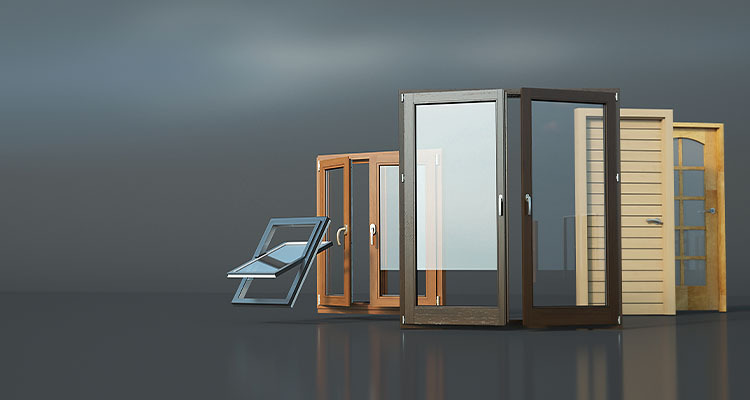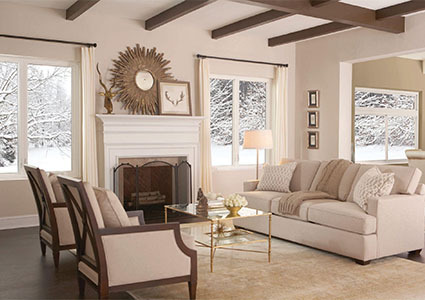
With the new Energy Star 7.0 requirements in mind, Gary Luther writes about the importance of weather-resistant and energy-efficient windows and doors for new homes
Although the construction industry is ever-evolving, one thing has remained constant: integrating weather-resistant, energy-efficient windows and doors into every new build is as important as ever. Keeping these considerations in mind is essential for new single-family and multi-family homes, as they provide better protection, reduce energy costs and boost home comfort.

In selecting weather-resistant products, builders and contractors must account for the varied geographic locations of their projects. Different regions have unique weather patterns, so windows and doors need a customized approach, not a one-size-fits-all solution. To that end, trade professionals must focus on three crucial factors – air, water, and structural integrity. These key factors affect daily performance and longevity, and provide vital protection against the elements, ultimately guiding product choices for new builds. For example, windows and doors designed for air resistance help prevent drafts.
On the other hand, water-resistant features are crucial for their ability to withstand severe weather conditions. Structural integrity, which is primarily concerned with wind resistance, ensures that windows and doors can endure both the inward push and outward pull of wind forces, which is crucial for maintaining their stability and performance in stormy conditions.
Additionally, certain window designs, like casement or awning styles, naturally enhance weather resistance thanks to their design. When these windows are closed and locked, the weatherstrip is compressed, creating a tighter seal and improving wind load management. Installation methods and overall home design, including features such as roof overhangs, can also significantly influence the ability of windows to resist various weather conditions. Poor air and water resistance and compromised structural integrity in windows and doors can expose new construction to heightened risks of weather-induced damage. This could include, for example, water leaks during heavy downpours combined with high winds, potentially leading to expensive repairs and upkeep over time.
Energy efficiency in weather protection
If builders and contractors include energy-efficient features in weather-resistant windows and doors, it boosts their performance, making homes more comfortable, sustainable, and valuable. This is especially true with those that comply with the new Energy Star 7.0 standards. Assisted by the new criteria, windows and doors must meet rigorous U-factor requirements for all climate zones and the adjusted solar heat gain coefficient (SHGC) requirements in the South Central and Southern zones. The standards also introduce a minimum SHGC for the Northern zone, enhancing energy efficiency and performance.
Non-weather resistant and non-energy efficient windows and doors can also lead to poor insulation, causing higher energy consumption for heating and cooling. This increases utility bills and contributes to a larger environmental footprint. Long term, this type of oversight can also negatively affect everything from property value to homeowner comfort.
Practical tips for builders
Proper installation: Ensuring windows and doors are correctly installed is paramount. This involves verifying they are plumb, level and square, and focuses on proper sealing. The window and door sills must be level to prevent the sash from tilting, which would lead to uneven pressure and increase the likelihood of air and water infiltration. Additionally, the window and door jambs should be vertical, and each corner should form a 90-degree angle for optimal performance and durability.
Window and door selection based on climate: Selecting the appropriate windows and doors for your construction project, tailored to the area’s specific climate, is also essential. Factors such as high altitudes, proximity to water bodies and unique conditions of high desert plains heavily influence product choice. As such, in areas with strong winds, builders should install wide windows and patio doors in homes to align with the wind patterns. Those in areas of high sun exposure should focus on a Low-E glass coating and low solar heat gains for better thermal protection. Conversely, in colder regions, high solar heat gains are preferable to harnessing the sun’s energy for warmth.
Invest in energy-efficient windows and doors that comply with Energy Star 7.0: Install windows and doors that comply with the new Energy Star 7.0 requirements, as they will bring enhanced comfort, durability, and sustainability to any new construction home. Builders and contractors must ensure they are using products with glass package solutions that enhance thermal performance by effectively regulating heat transfer.
as they will bring enhanced comfort, durability, and sustainability to any new construction home. Builders and contractors must ensure they are using products with glass package solutions that enhance thermal performance by effectively regulating heat transfer.
Choose triple-pane glass windows for enhanced energy efficiency: Triple-pane windows have multiple layers of glass with gas in between, reducing heat transfer and improving energy efficiency.
Incorporating weather-resistant and energy-efficient windows and doors into a project goes beyond mere trend following, it’s an essential component of contemporary building practices. Through careful selection and installation of windows and doors tailored to the unique climatic demands of each region, as well as compliance with the latest Energy Star 7.0 standards, builders and contractors can significantly enhance both the quality and eco-friendliness for their projects. This combination should result in more comfortable, durable, and environmentally friendly homes.
www.cornerstonebuildingbrands.com
With more than 21 years of experience in the building industry, Gary Luther currently serves as Senior Product Manager at Cornerstone Building Brands, the largest manufacturer of exterior building products by sales for residential and low-rise non-residential buildings in North America. Gary’s background spans process engineering, quality management and product management, and he’s earned a strong reputation for having multifaceted expertise in the field. The company’s market-leading portfolio of products spans vinyl windows, vinyl siding, stone veneer, metal roofing, metal wall systems and metal accessories.